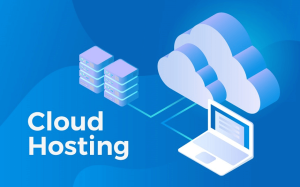7 Things to Do Before Sending Your Project for Printing

Just like how doctors carry out several checks before performing a surgery, a designer has to take care of a number of pre-print checks before sending your files to the printer. If you notice an error on a website, you can quickly fix it. However, finding the same error on thousands of printed material will leave you with the only option of reprinting. Despite being in the digital age, the importance of printed materials cannot be overlooked. Giving something tangible and tactile to potential customers and clients increases the chances of conversions.
The following article lists seven essential checks to perform before you send your file to print. Several custom printing services online often perform these checks themselves or guide you to make a printable document. However, it is always a good idea to perform these checks yourself to ensure a smooth printing process.
Bleed:
Every graphic designer understands the importance of a bleed. It refers to art that extends beyond the fringes of the document, ensuring that when the print is cut to size, no important part is chopped off. It is usually recommended to have a bleed of 3mm for posters, flyers and such. But the size of the bleed increases with the dimensions of the print. Ensure that there is enough bleed area to avoid reprints.
Images to be in CMYK:
One of the basic tenets of printing is that all documents should be the CMYK color scheme and not RGB. This tiny yet expensive error should be taken care of when sending documents to print. Though present-day PDF converters automatically perform this change when you save the file, it is always a good idea to ensure it manually. Since most printers follow a CMYK format, out-of-sync documents can wreak havoc on the final product.
Resolutions:
Ensure that images used in the design (if any) are at least 300ppi. It may change depending on the type of document, so consult with your printer before you use images. Lower PPIs results in a poor print with hazy and pixelated images. The error occurs as some designers use 72dpi images instead of 300ppi. It also occurs if the image used for the print was initially intended for web pages. To ensure that images are clear and undistorted, carefully convert your images.
Embed Custom Fonts:
If you are using custom fonts or fonts that won’t be available with the printers, make sure to embed the fonts into your document. If not embedded, fonts tend to be replaced with other fonts available with the printer, which will ruin all your hard work. For smaller documents, you could convert the font paths, which will maintain consistency throughout the document.
Proofreading:
For original documents, every tiny error in spelling or grammar get multiplied by the number of prints and become huge. It may ruin your credibility and is a costly mistake that you should avoid at all costs. No matter how amazing the copy is, these silly mistakes may cost you a fortune. Make sure to perform multiple reads and use fresh eyes. If you are doing a client’s design, then make sure to send them a copy for them to approve.
Hard Copy Samples:
The only way to ensure that the document is error-free is to invest in a hard copy sample. It will not only allow you to make a note of the alterations needed in the design, but it will help you make an accurate judgment regarding the quality of the print. Hard copy proofs are necessary for large prints but shouldn’t be avoided for small jobs as well.
Limitations of the Printer:
The final item on the checklist is to find the limitations of the printer. Before making big plans about textures, finishes, cuts and special effects, however, your printer might not have those features available to offer to you. Before planning your design, talk with your printer or choose a printer that provides the features you require.
There are several custom document printers online that would meet your needs within your budget. There are also services that will help you connect you to the right printer for your project, so you don’t have to go through the hassle. It is best to employ such services so that you can concentrate entirely on your project and not worry about finding the right project.






